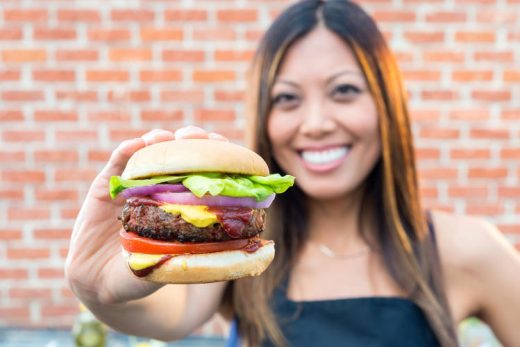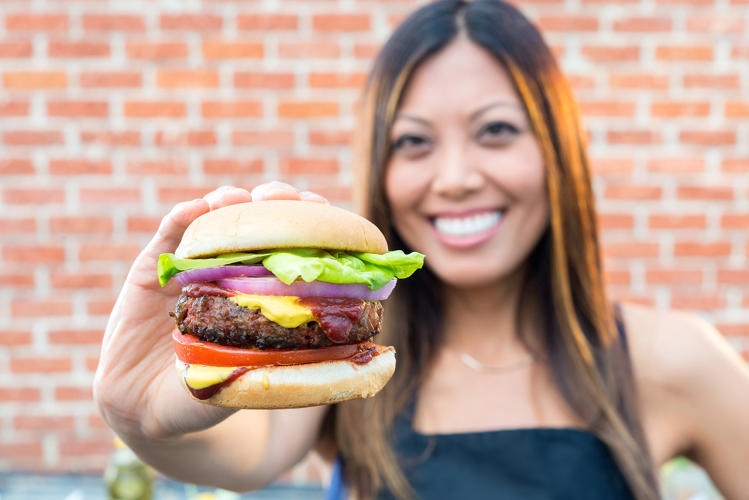Beyond Meat’s Quest To Get Its Veggie Burger In The Supermarket’s Meat Case
With the help of a team of scientists from Stanford University, Caltech, and elsewhere, Beyond Meat spent more than three years developing its Beyond Burger, a veggie burger that aims to closely simulate the feel of eating meat. It hit the aisles at Whole Foods in Boulder, Colorado, last month, making headlines and selling out within a few days.
But its biggest challenge to success still lies ahead. It will depend on the company’s ability to convince grocery stores to put it in a place no veggie burger has gone before: the meat aisle.
The Beyond Burger, made primarily from pea protein and coconut oil (with a dash of beet juice for redness), is unique among plant-based burgers so far in that CEO Ethan Brown wants to only sell the “raw,” fresh-packed burger in grocery stores that will place it in the refrigerated fresh meat case.
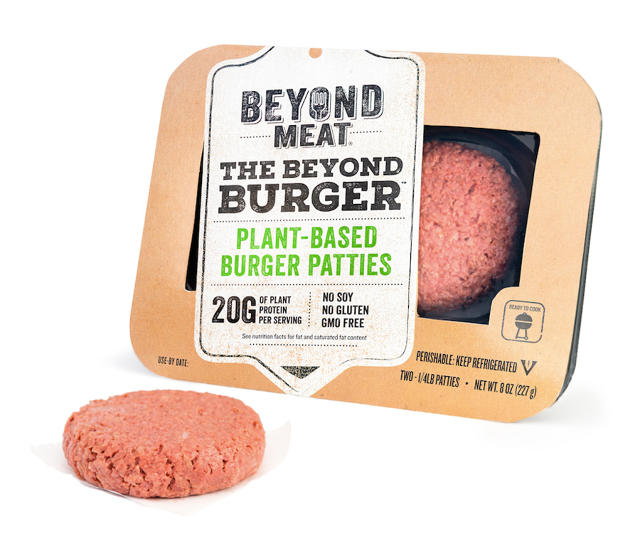
One day, he envisions this space will be called the “protein” aisle, in the same way that dairy aisles have made room for almond milk, soy milk, and a proliferation of other alternative products alongside the traditional cow variety. But that’s not an easy sell, even to the largest health-conscious chain in the country. “We approached Whole Foods in 2012-2013 with a chicken product. They didn’t agree to it. They weren’t ready, the product wasn’t ready,” says Brown.
This time, with the Beyond Burger, Brown talked to Theo Weening, the global coordinator for meat buying at Whole Foods, and met with him in Maryland. Whole Foods has a decentralized structure, where different regions can make different buying decisions. Weening was sold this time, and he called a meeting with all regional meat buyers and walked them through the product, and the idea of putting it in the meat case. Tom Rich, the Rocky Mountain region vice president of purchasing and distribution, ended up agreeing to it—hence the Colorado-only debut.
Right now, there aren’t concrete plans for further distributions beyond the Rocky Mountain region or with other retailers, but Brown is pushing discussions as Beyond Meat prepares to open up a new production facility in Dallas to meet demand. He is optimistic he can convince other grocery retailers, as Beyond Burgers have been flying off the shelves in Colorado already. And now, more than a few years ago, consumers are waking up to the health and sustainability benefits of reducing their meat consumption.
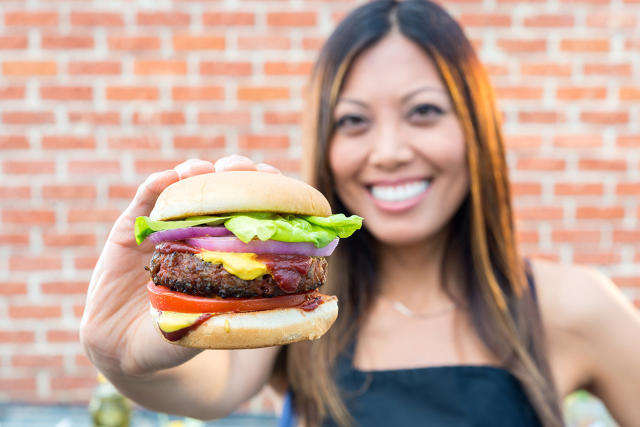
“I can tell you that three or four years ago there would never have been this reaction,” says Brown. “There’s a shift occurring.”
At a taste test arranged by Beyond Meat in Fast Company’s New York City office, I found that the burger tastes good and the texture is the most meaty by far I’ve ever experienced—and as a vegetarian for eight years, I’ve tasted many.

Unlike a rare or medium-rare cooked beef burger, it doesn’t really “bleed” when eaten, like some media reports suggested. But it has a reddish-looking juice flow when on the grill. My meat-eating colleague, Ben Schiller, tried it with me and was impressed but not completely converted: “I wouldn’t choose it over a meat burger, but I’d be happy to eat it.”
Schiller, as a meat eater, is more the kind of person that Beyond Meat hopes to win over. But the process will be a long one of shifting perceptions and continuing to improve the product. The Beyond Meat burger went through hundreds of iterations in testing, trying to get the “mouthfeel” as close to meat as possible, but Brown says that the company is going to continue to work on the formulation in a process of “public iteration.” “We’re not even close to done with the burger. Next year, it will be so much better,” he says.
Stanford University biophysicist Joseph Puglisi, who heads Beyond Meat’s scientific advisory board, is proud of the final product but, speaking at a recent conference, agreed it’s a work in progress. “I think it’s a very tasty burger. Does it fully mimic the experience of eating a hamburger? No, no, I’ll be honest with you. But it comes really close, and it’s very enjoyable to eat.”
As with many food products, it’s all about setting the right expectations. The company has gotten a lot of hype in the tech press because of investors like Bill Gates and Twitter-cofounder Biz Stone, but few regular consumers care about this. Lately, Beyond Meat has been working with professional athletes to promote all of its products to a health-minded audience. Brown returns to power of marketing and positioning. He is inspired by the “Got Milk” ad campaign in the 1990s, which convinced families that they basically had to drink milk to be healthy. Getting the right branding is important, and that is why Brown won’t compromise on the new burger’s grocery store placement.
“If you can get people to stop thinking about meat in terms of its origin—chicken, cow, or pig—but more in terms of its composition—proteins, fats—I think the term meat almost becomes semantic at that point,” he says.
Have something to say about this article? You can email us and let us know. If it’s interesting and thoughtful, we may publish your response.
All Images: via Beyond Meat
Correction: This story originally suggested the Beyond Burger contained an added “smoke” flavor. It does not.
Fast Company , Read Full Story
Beyond Meat is trying to convince grocery stores to put its new veggie burger in a place no veggie burger has gone before: the meat aisle.
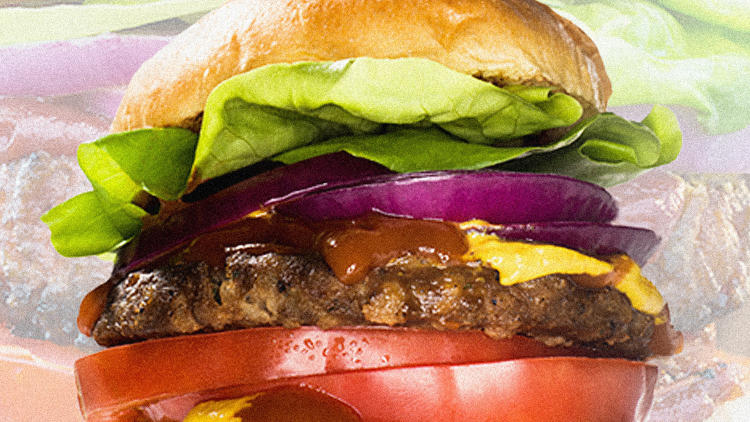
Beyond Meat’s CEO envisions this space will be called the “protein” aisle, in the same way that dairy aisles have made room for almond and soy milk.
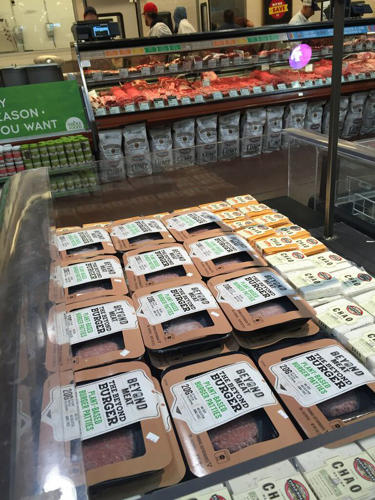
At a taste test arranged, I found that the texture is the most meaty by far I’ve ever experienced–and as a vegetarian for eight years, I’ve tasted many.
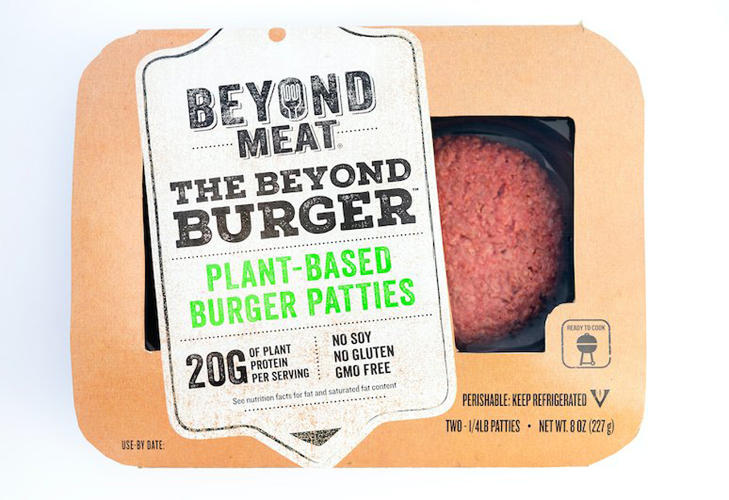
Getting the right branding is important, and that is why Beyond Meat won’t compromise on the new burger’s grocery store placement.

(37)

